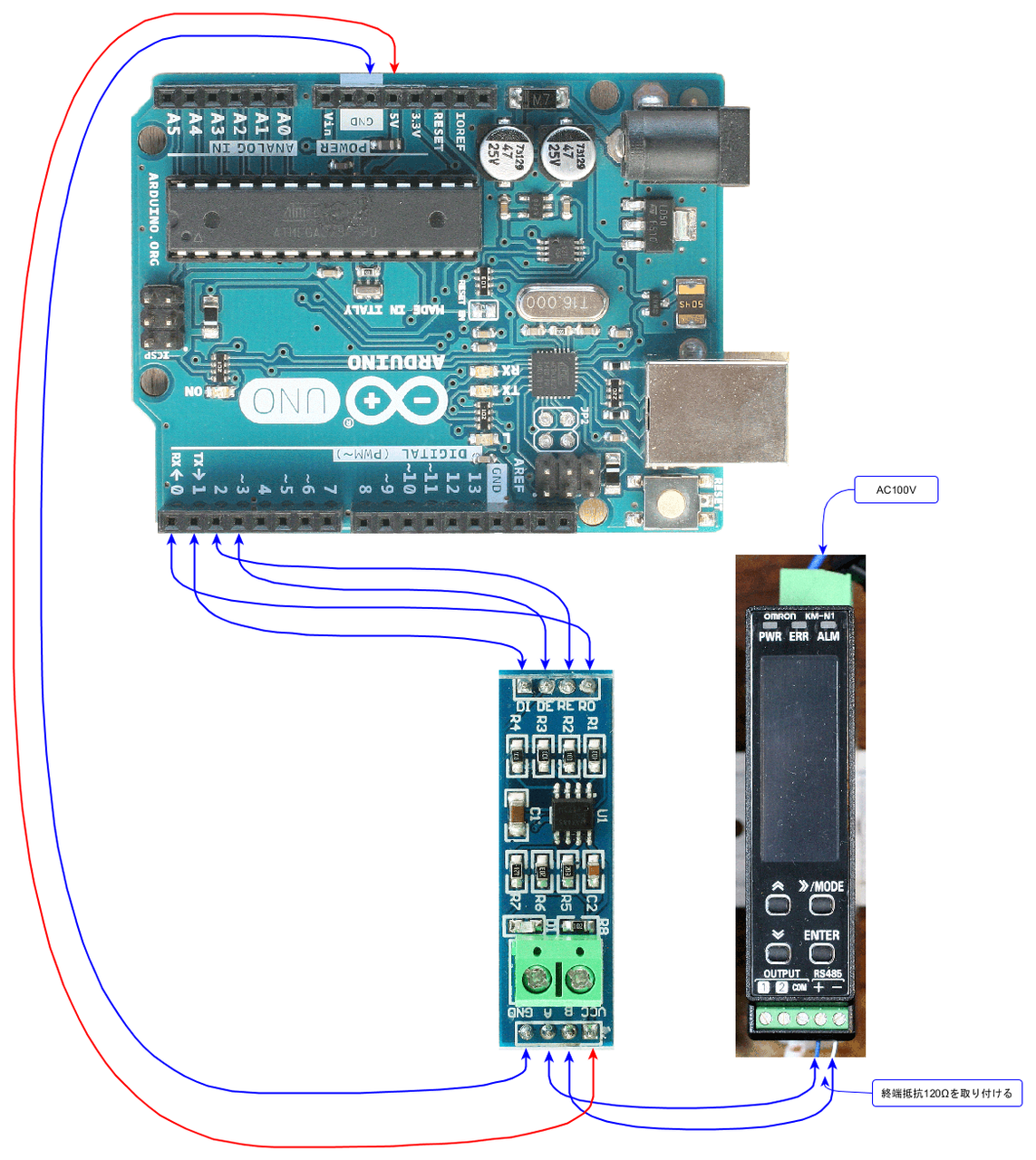
The BitBus broadcast mechanism is used to provide a higher level mapping between NXT address (we use the Bluetooth address of the nxt), or name and the underlying BitBus address (a single byte). Although many applications use RS-485 signal levels, the speed, format, and protocol of the data transmission are not specified by RS-485. All of these rates are much higher than needed with our railroad applications and the C/MRI. ↑ “RS-422 And RS-485 Applications Ebook” (PDF). To add a little extra noise margin, use 680 Ω resistors and you have one of the more common biasing networks used on a RS-485 network. The diagram below shows potentials of the A (blue) and B (red) pins of an RS-485 line during transmission of one byte (0xD3, least significant bit first) of data using an asynchronous start-stop method. With an addressable capacity of 128 SMINI nodes, with 72 I/O lines per node, the maximum capacity of the C/MRI system using the SMINI is 9,216 I/O lines. If you are starting out with a single node, with plans to expand at a later date to multiple nodes, then it’s a good idea to configure your first node for RS485. Additionally, in every case, the RS422 or the RS485 full duplex implementation is used to make the “daisy-chain” connection between multiple nodes.
My logic says that pymodbus builds in the RS485 standard, and if that underlying layer of RS485 does not work, pymodbus will not. Supports Windows XP through Windows 10. – Implemented as a standard Windows DLL, which will work with all versions of Windows. Each can work just fine with the C/MRI. Then, you can use the Fig. 4-1 setup for connecting to your computer and have everything ready simply to connect additional nodes as your system expands. It has anti-ultraviolet and anti-rain features as well, making it suitable for long-term outdoor use. Each SMINI and SUSIC includes an adjacent pair of RS485 pins making the daisy-chaining easy to accomplish. An RS232 to RS485 Converter Card, such as the RS485 card supplied by JLC Enterprises and covered in detail near the end of this chapter, provides the required conversion to make the connection to the computer’s RS232 serial port. However, how to apply each of the different serial interfacing options, including detailed wiring information for each approach, is presented near the end of this chapter.
The most straightforward approach, and the one that typically provides the best overall system performance, is using a computer with a built-in RS232 Serial Port. In reality, if you are using relatively modern equipment (say 1990 or later) and a low baud rate, line lengths of 1,000 feet (300 m) or more are possible. Purchase by using the following button and adding to the PayPal cart (where you can change the quantity). This object can be used to create new connections. If you adored this article so you would like to be given more info pertaining to RS485 standard kindly visit the web-page. You can enter the data relating to the MQTT Broker you want to use; the name of the Topic to be used to control it and to read the periodic transmissions of the humidity percentage is shown. For example, a single SMINI can drive 48 signal LEDs and read 24 detector and switch position inputs. A long 3-conductor cable intended for RS-232 can often be switched to half-duplex RS-485, allowing communication at higher speeds and at higher external noise levels than the same cable used with RS-232 signaling. This means that in general, peripherals cannot communicate with the host, the PC, unless the host specifically requests communication.
Many references and examples are made to “asynchronous start-stop communication with a UART” or “UART” communications. The other pins, 22 in number for the DB25, are for handshaking between the computer and the peripheral device. Alternatively, if your computer has USB only, then you will need to incorporate either a USB to RS232 Converter Cable between the computer and the RS485 card or a USB to RS422/485 Converter Cable connected between the computer and the RS485 header on the SMINI or SUSIC. It requires a single 3-wire RS232 cable to connect between the computer’s RS232 serial port and the RS232 header on the SMINI or the SUSIC. POTS telephone cable’s impedance is less controlled than CAT cable and can vary from 600 Ω at lower audio frequencies to less than 100 Ω at higher frequencies. This signal is used for sensorless homing- the TMC2209 will pull this signal high when it detects a stall which can be used to detect when the gantry collides with its physical endstop. In high quality cable, the conductor losses and the dielectric losses are on the same order of magnitude. Low data rates are primarily limited by the DC resistance of the cable (the effects of the DC resistance of the cable are made worse if a termination resistor is used) and high data rates are limited by the AC effects of the cable on signal quality.
